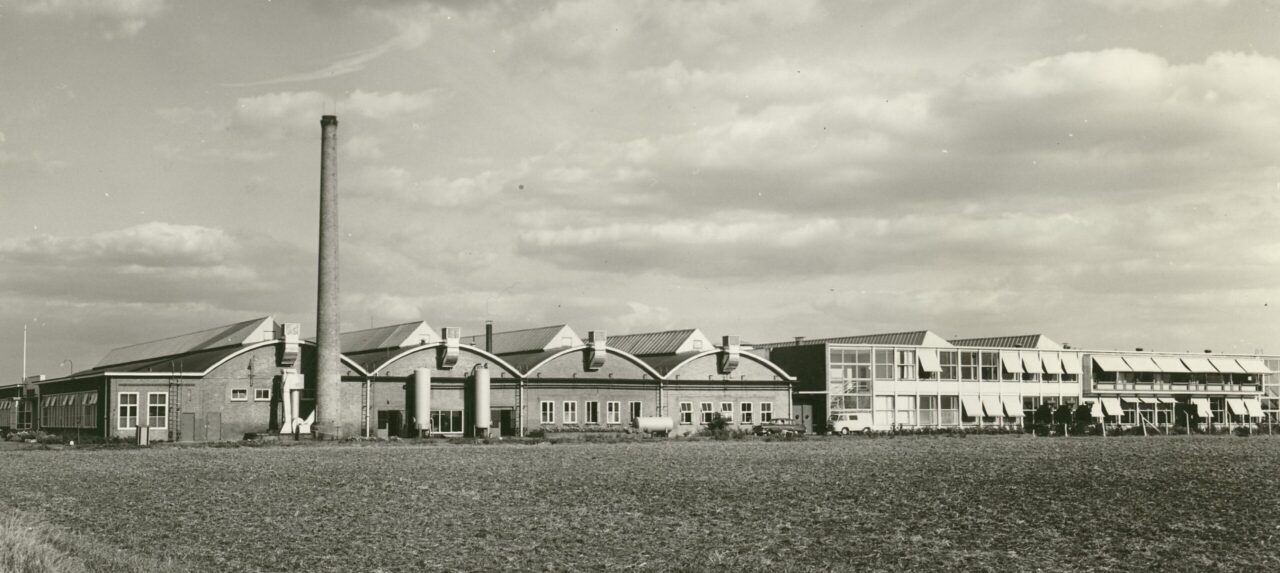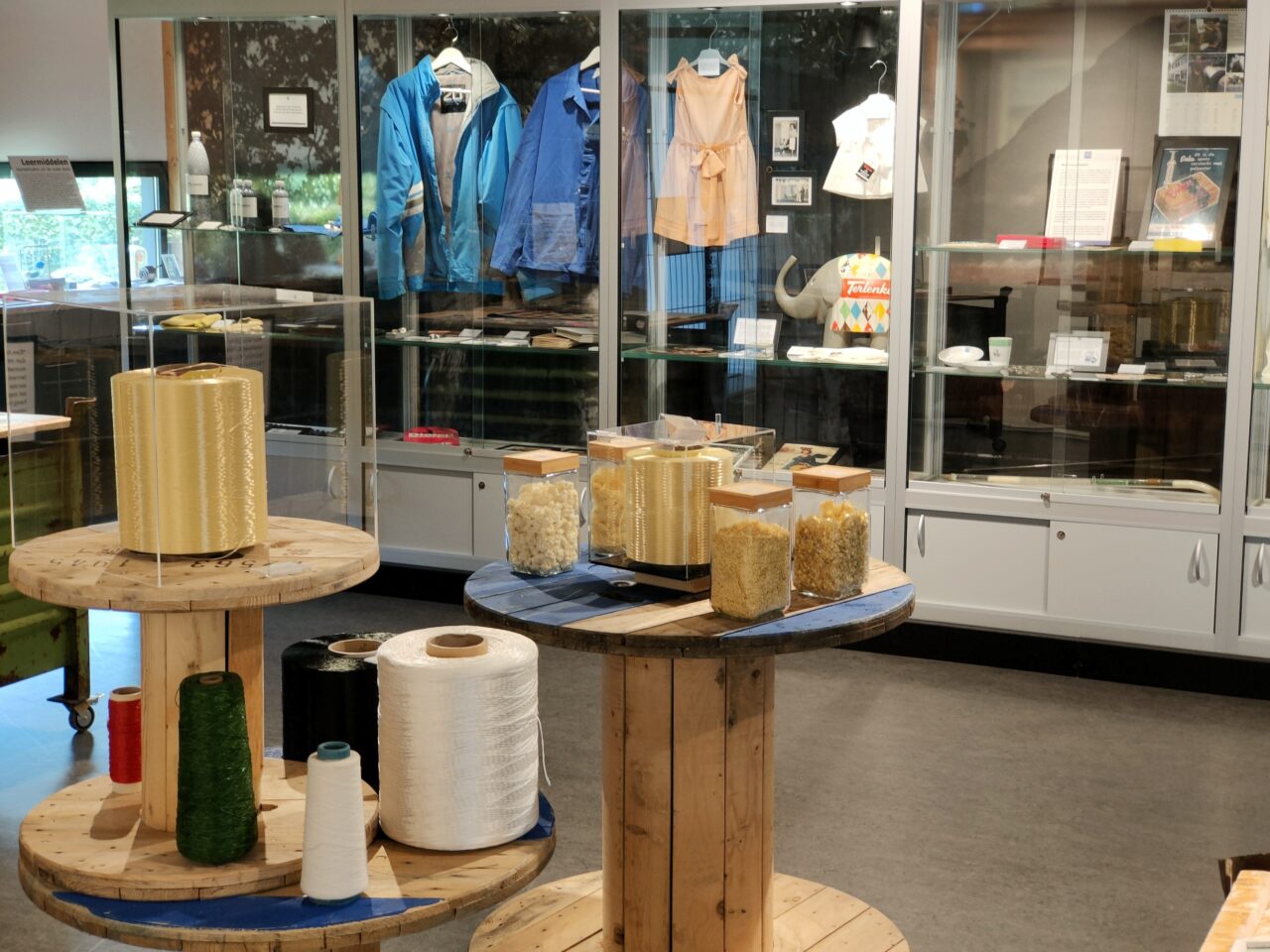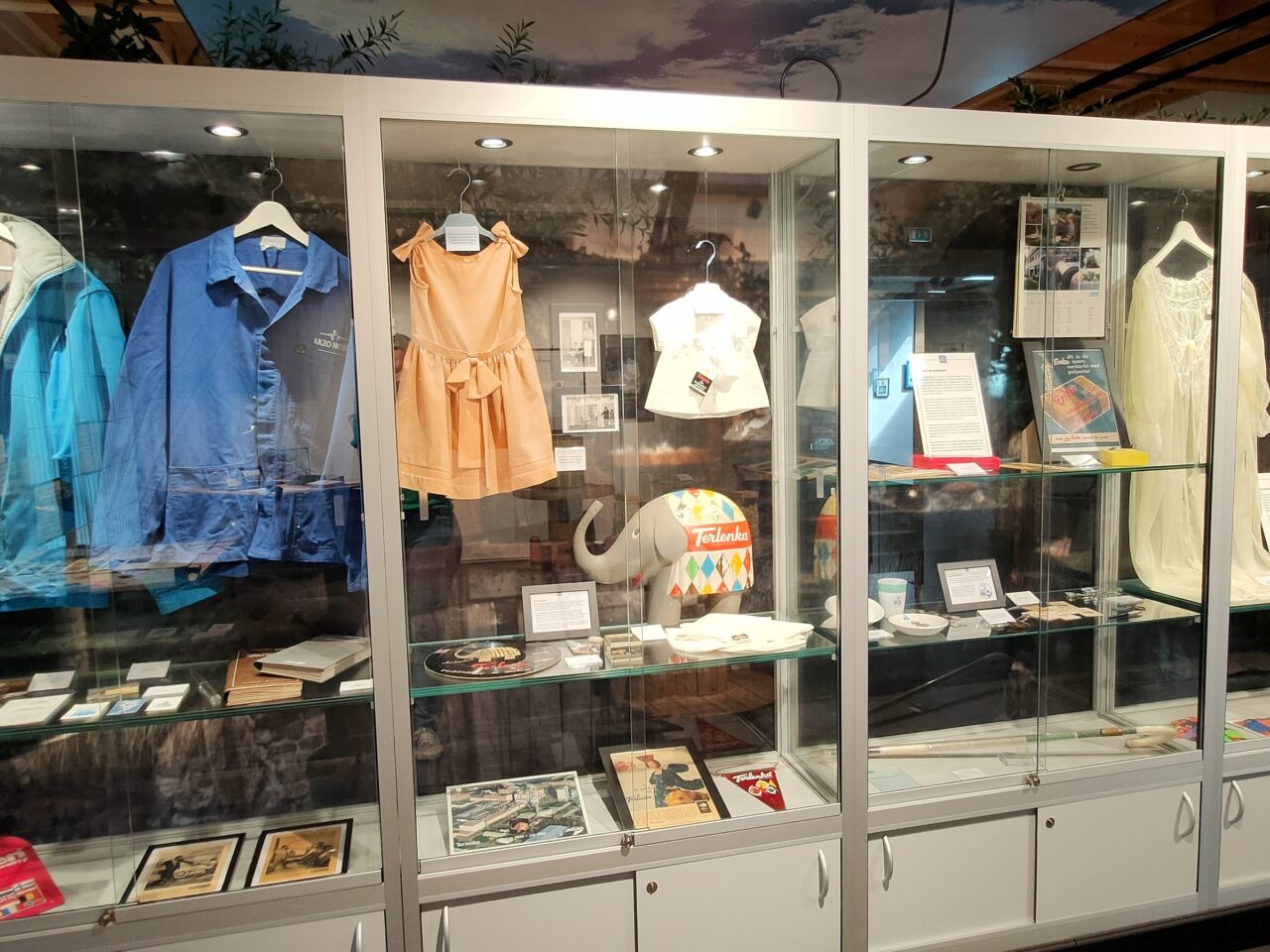In prelude to a major permanent exhibition on the industrial heritage of the municipality of Emmen, Museum Collectie Brands presents four pilot exhibitions in 2024 & 2025. These are small-scale exhibitions.
The second industrial heritage pilot exhibition focuses on the theme “synthetic fibers”. The focus will be on AKU / Enka and the companies that emerged from it.
Algemene Kunstzijde Unie
The Algemene Kunstzijde Unie (AKU) was a major driving force in the industrialisation of south-east Drenthe. Due to a shortage of personnel in the Arnhem/Ede region, the AKU established a branch in Emmer-Compascuum in late 1947. Why there? Well, in the south-east of Drenthe, unemployment rates were high after the collapse of the peat industry, so there were many workers available.
Peat workers successfully became factory workers at the AKU. When the search for a location for new factories began in the early 1950s, AKU once again ended up in Drenthe. On the outskirts of Emmen, in the Bargermeer area, a huge factory site arose. The Enkalon and Terlenka factories produced nylon and polyester fibres and yarns respectively. Products that were eagerly purchased by the textile processing industry. The factories were therefore expanded again and again, bringing with them many jobs. Workers came from villages surrounding Emmen and they knew they had good prospects in the AKU factories. They received decent wages and so south-east Drenthe suddenly became a prosperous area (also thanks to many other companies, of course).

AKU, Enka, Akzo. What about these names?
AKU originated from the Nederlandse Kunstzijdefabriek, which was founded in Arnhem in 1911. Because of the abbreviation of the company name N.K., people quickly spoke of the ‘Enka’ in popular speech. It would later actually market its products under this name. In 1929, Enka merged with the German synthetic fibre company Vereinigte Glanzstoff Fabriken. Although the holding company was now officially called AKU, the Dutch factories and products continued to carry the Enka name.
It was not until 1969 that the two companies merged completely and merged into Koninklijke Zout Organon. A global concern was thus born. AKU + KZO becomes AKZO. Yet it takes until the late 1980s until the name Enka is finally replaced by Akzo. Akzo grows into a huge concern of merged companies. A success, you might say, but not for the synthetic fibre division. Due to an overproduction of synthetic fibres and fierce competition from low-wage countries, Akzo decides to sell this business unit in the late 1990s. This eventually leads to the various fibre divisions being given new owners. The Twaron division, for example, becomes the property of Teijin Aramid. So today, AKU’s synthetic fibre legacy continues, albeit in a fragmented landscape.
We were able to realize this exhibition thanks to various people who have donated objects, documents and photos to the museum. In addition, companies such as Teijin Aramid, Cumapol and Senbis have loaned objects.

